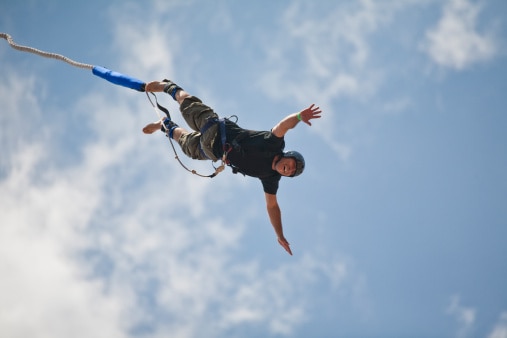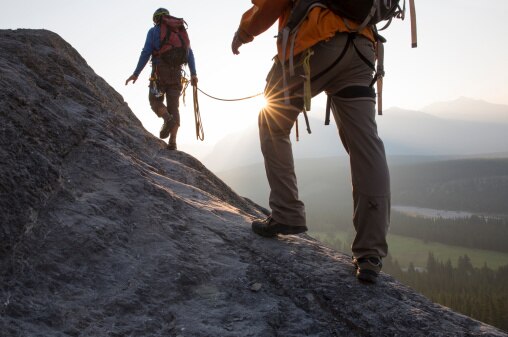Bungee Jumping To Sky Diving- Debunking Myths Related To Adventure Sports
Whether you're soaring through the sky, conquering rugged terrains, or diving into the depths of the oceans, the realm of adventure sports offers an exhilarating escape from the ordinary.

In a world that constantly seeks excitement and new horizons, adventure sports have emerged as the ultimate playground for thrill-seekers and adrenaline junkies. Whether you're soaring through the sky, conquering rugged terrains, or diving into the depths of the oceans, the realm of adventure sports offers an exhilarating escape from the ordinary.
But, even if we want to embark on such an exhilarating journey, there are myths and misconceptions that hold us back. In this article, we have addressed certain myths related to bungee jumping, mountain hiking and sky diving.
Myths Around Bungee Jumping
Niharika Nigam, who is the Director, Business Development at Jumpin Height said, "In the realm of adrenaline-pumping experiences, few can match the heart-racing intensity of bungee jumping. Yet, for all its thrill-seeking glory, this extreme sport is often shrouded in a veil of misconceptions and urban legends. From concerns about safety to assumptions about who can partake, the world of bungee jumping has amassed a collection of myths that deserve to be debunked."
So, fasten your virtual seatbelt and let's leap headfirst into the world of bungee jumping, separating fact from fiction one myth at a time.
Myth 1: Bungee jumping can cause physical problems
Fact: Contrary to popular belief, carrying out a well-executed head-first leap from the platform leads to a remarkably smooth descent. The bungee cord chosen is specifically tailored to your weight, allowing for a gradual stretch as you approach the nadir of your plunge. This ensures a gentle and elegant deceleration, minimizing any abrupt jerks. Prior to your jump, the experienced crew will provide you with guidance on the optimal take-off technique, ensuring a seamless experience.
Myth 2: One needs to be very fit to undertake Bungy
Fact: You are deemed fit to jump unless you suffer from medical conditions such as back or neck injuries, recent fractures, high blood pressure, asthma, epilepsy, heart conditions, or osteoporosis. While better fitness always enhances any physical experience, bungee jumping does not demand above average stamina or athletic bodies. The age criteria in India is 12-45 years and weight limit is 40-110 kgs.
Myth 3: The bungee cord might snap.
Fact: Despite its seemingly simple appearance, the bungee cord boasts a complex and meticulously engineered design. Crafted from thousands of strands of durable latex rubber, each cord undergoes a rigorous battery of tests and approvals to ensure its safety and reliability. Rest assured, when you take the leap, you're relying on a cord that's been thoroughly vetted and proven to withstand the forces of the jump. The cords usually snap when its been overused, thereby violating safety standards by compromising on quality by way of wear and tear for the sake of quantity. Every bungy chord has a lifespan and the number of jumps it should be used for. Choosing a reputable operator is therefore of utmost importance, one with experience and expertise.
Myth 4: Bungee jumping is excessively dangerous.
Fact: Surprisingly, statistical data indicates that the risk of fatality associated with a bungee jump is comparable to that of being in a car traveling at 60 kilometers per hour. In the realm of commercial extreme sports, both bungee jumping and skydiving stand out as some of the safest activities. To put it into perspective, they are approximately six times safer than operating a car, let alone a motorcycle. This eye-opening comparison underscores the relative safety of these exhilarating experiences.

Myths Around Moutain Hiking:

Myths Around Sky Diving:

Trending News
Top Headlines





































